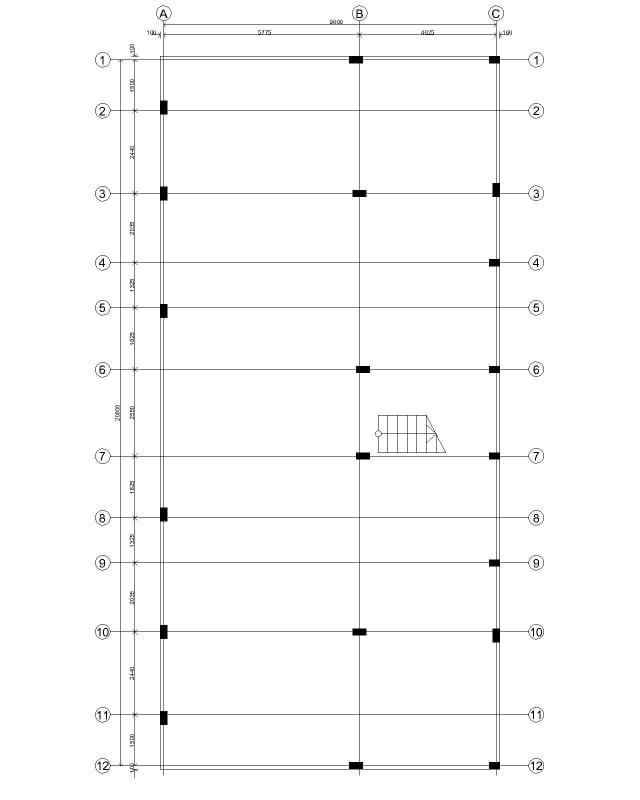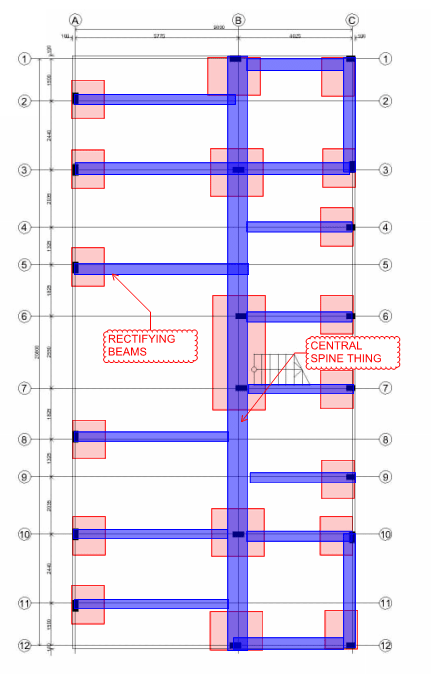YuleMsee
Structural
- Apr 8, 2018
- 68

This is a foundation layout for a 4 storey building sitting on the entire plot, boundary to boundary.
Its essentially an eccentricity problem. When I consider a combined footing running from Gridline A-C, some columns e.g on Gridline 2 & 4 are left orphaned. Been scratching my head for the better part of today and I still have no solution.
Anyone with ideas on a layout that can work.

